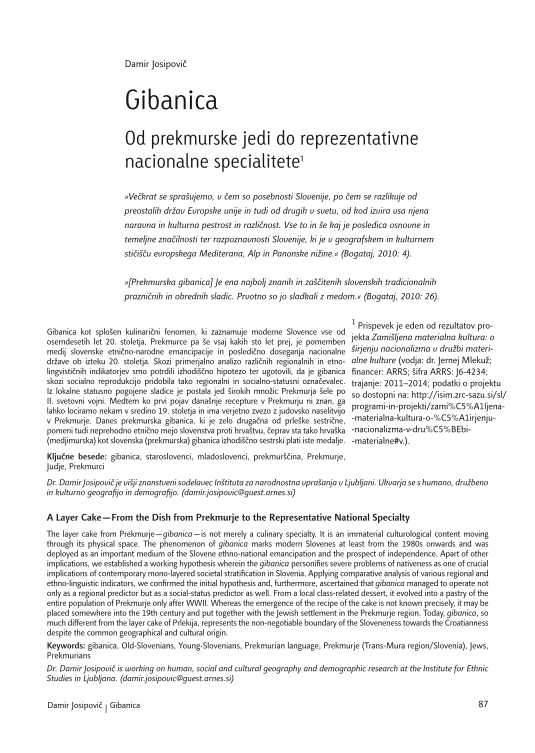The layer cake from Prekmurje—gibanica—is not merely a culinary specialty. It is an immaterial culturological content moving through its physical space. The phenomenon of gibanica marks modern Slovenes at least from the 1980s onwards and was deployed as an important medium of the Slovene ethno-national emancipation and the prospect of independence. Apart of other implications, we established a working hypothesis wherein the gibanica personifies severe problems of nativeness as one of crucial implications of contemporary mono-layered societal stratification in Slovenia. Applying comparative analysis of various regional and ethno-linguistic indicators, we confirmed the initial hypothesis and, furthermore, ascertained that gibanica managed to operate not only as a regional predictor but as a social-status predictor as well. From a local class-related dessert, it evolved into a pastry of the entire population of Prekmurje only after WWII. Whereas the emergence of the recipe of the cake is not known precisely, it may be placed somewhere into the 19th century and put together with the Jewish settlement in the Prekmurje region. Today, gibanica, so much different from the layer cake of Prlekija, represents the non-negotiable boundary of the Sloveneness towards the Croatianness despite the common geographical and cultural origin.




